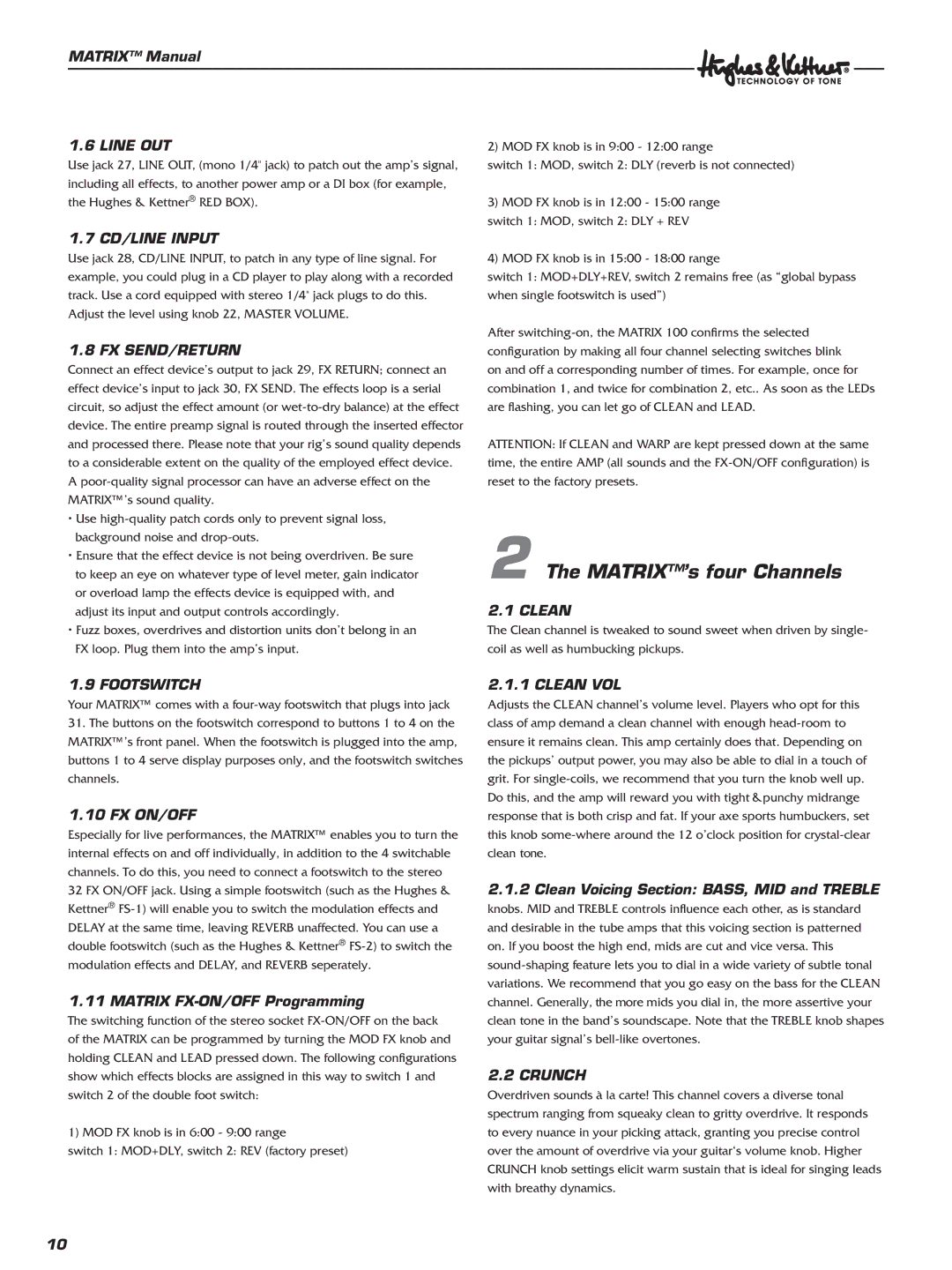100 Head, 100 Combo, 120 Combo specifications
Hughes & Kettner is a renowned name in the guitar amplification industry, celebrated for its robust, innovative gear that caters to musicians' diverse needs. Among their impressive lineup, the 120 Combo, 100 Combo, and 100 Head stand out as exceptional models, each designed to deliver high-quality sound and versatility.The Hughes & Kettner 120 Combo is a powerful and flexible amplifier, featuring a 120-watt output that makes it suitable for gigging musicians. At its core, the 120 Combo is built around a sophisticated tube preamp design that provides warm, rich tones that are characteristic of classic tube amplifiers. This model comes equipped with a dual-channel setup, enabling players to switch between clean and distorted sounds effortlessly. Its integrated reverb and several tonal options allow for an extensive range of sonic possibilities, making it a favorite among rock, blues, and jazz players alike.
Moving on to the Hughes & Kettner 100 Combo, this model delivers a punchy 100 watts of power while maintaining the signature tonal richness and responsiveness of Hughes & Kettner's design ethos. The 100 Combo is designed for those who appreciate the versatility to switch between sounds. With its built-in effects loop and the ability to connect to external pedals, players can further customize their sound. The amp features a simple yet effective EQ section that allows musicians to sculpt their tone with ease, producing everything from sparkling cleans to throaty overdrives.
The Hughes & Kettner 100 Head is the ultimate solution for guitarists needing a robust but portable amplifier head. At 100 watts, it offers significant power and headroom for larger venues. The 100 Head is designed with a focus on tonal integrity, featuring a tube-driven circuit that offers dynamic response and depth. The versatile channel switching allows players to access a wide range of tones, from pristine cleans to high-gain metal sounds. Moreover, the built-in speaker-emulated output is a boon for recording or direct-to-PA applications, providing high-quality sound reproduction without the need for a speaker cabinet.
In conclusion, the Hughes & Kettner 120 Combo, 100 Combo, and 100 Head present musicians with a range of top-tier amplifiers that embody quality, versatility, and innovation. Each model features advanced technologies, including tube-driven circuits and user-friendly interfaces, ensuring that players can capture their unique sound with ease. Whether performing live, recording in the studio, or simply jamming at home, Hughes & Kettner amplifiers are designed to meet the highest demands of modern guitarists.
